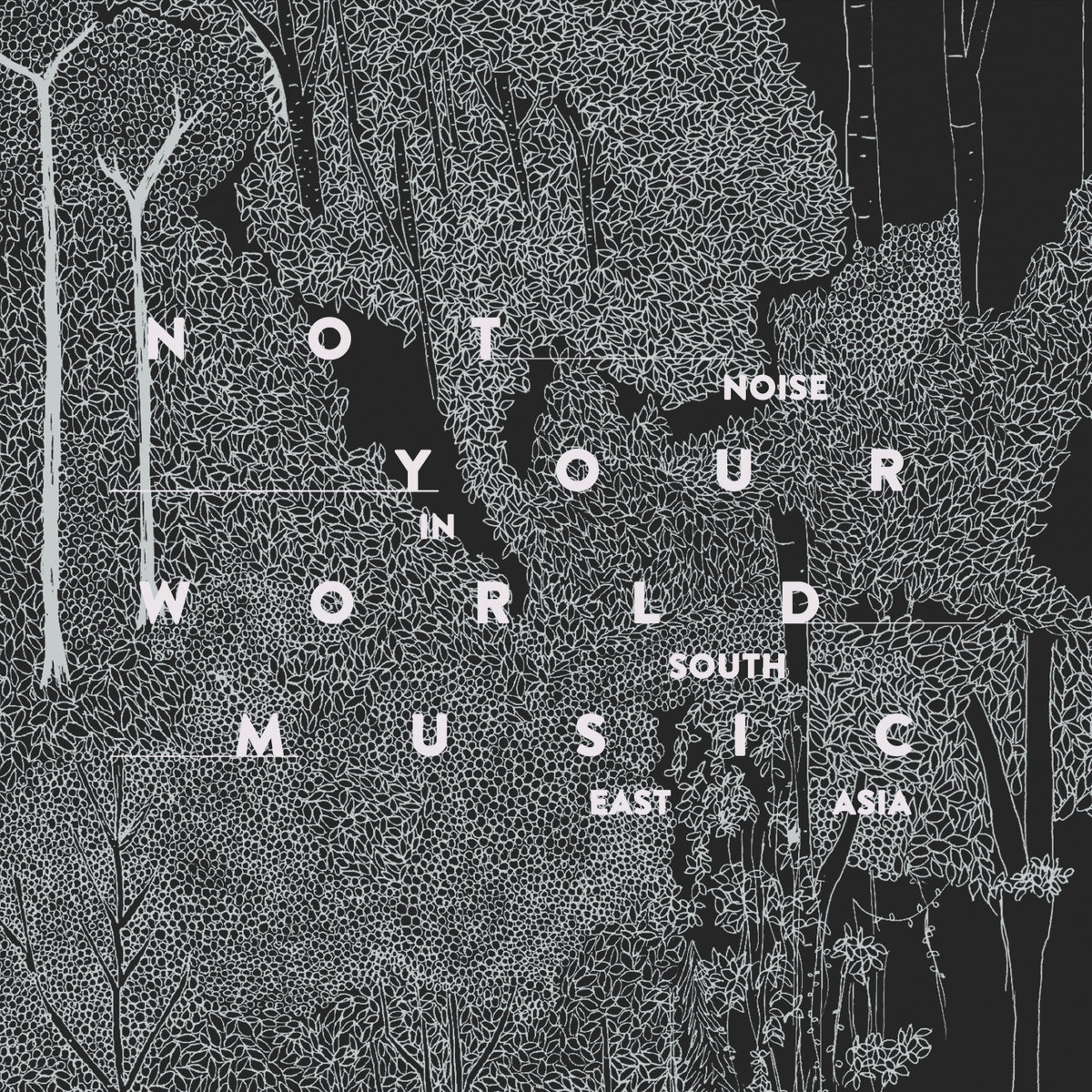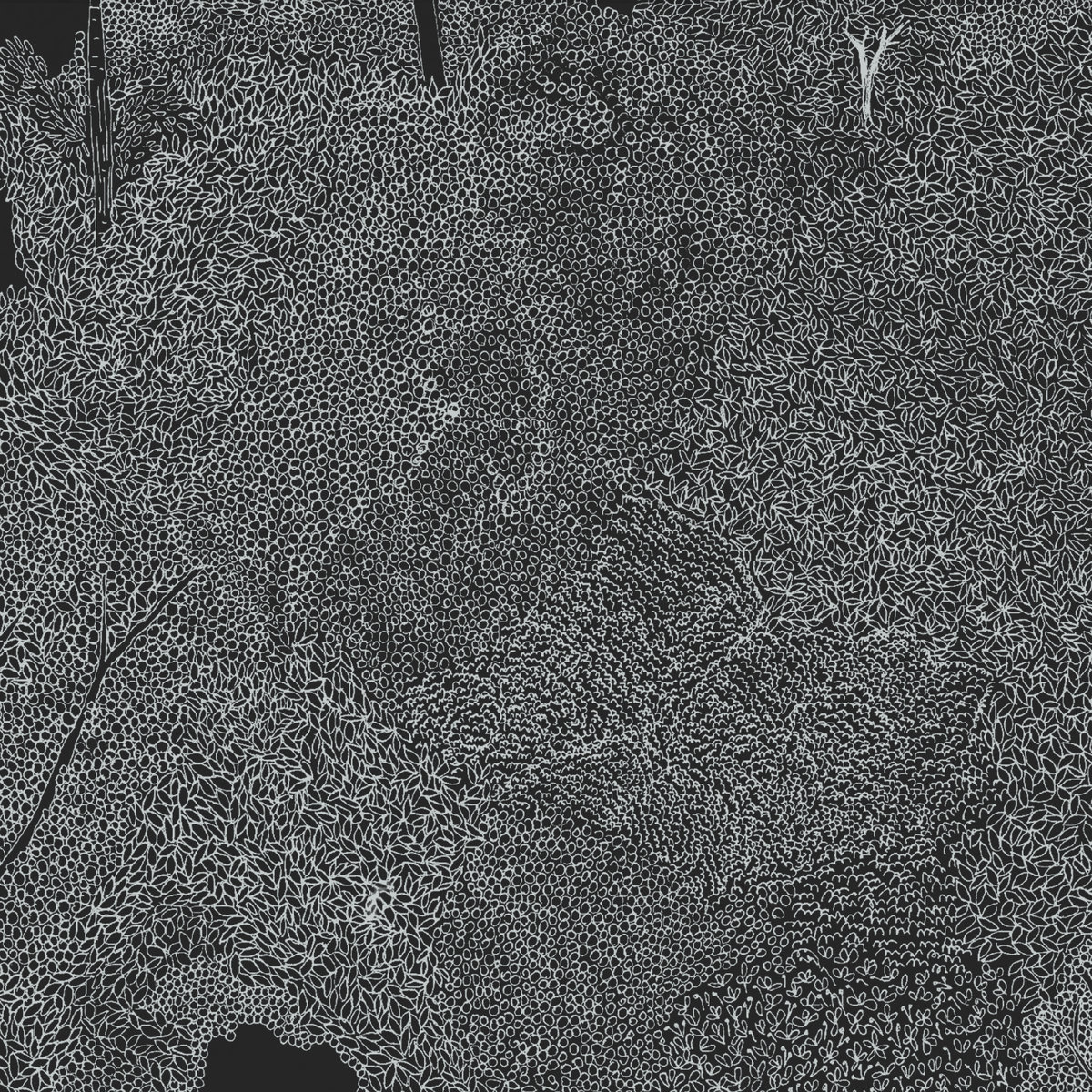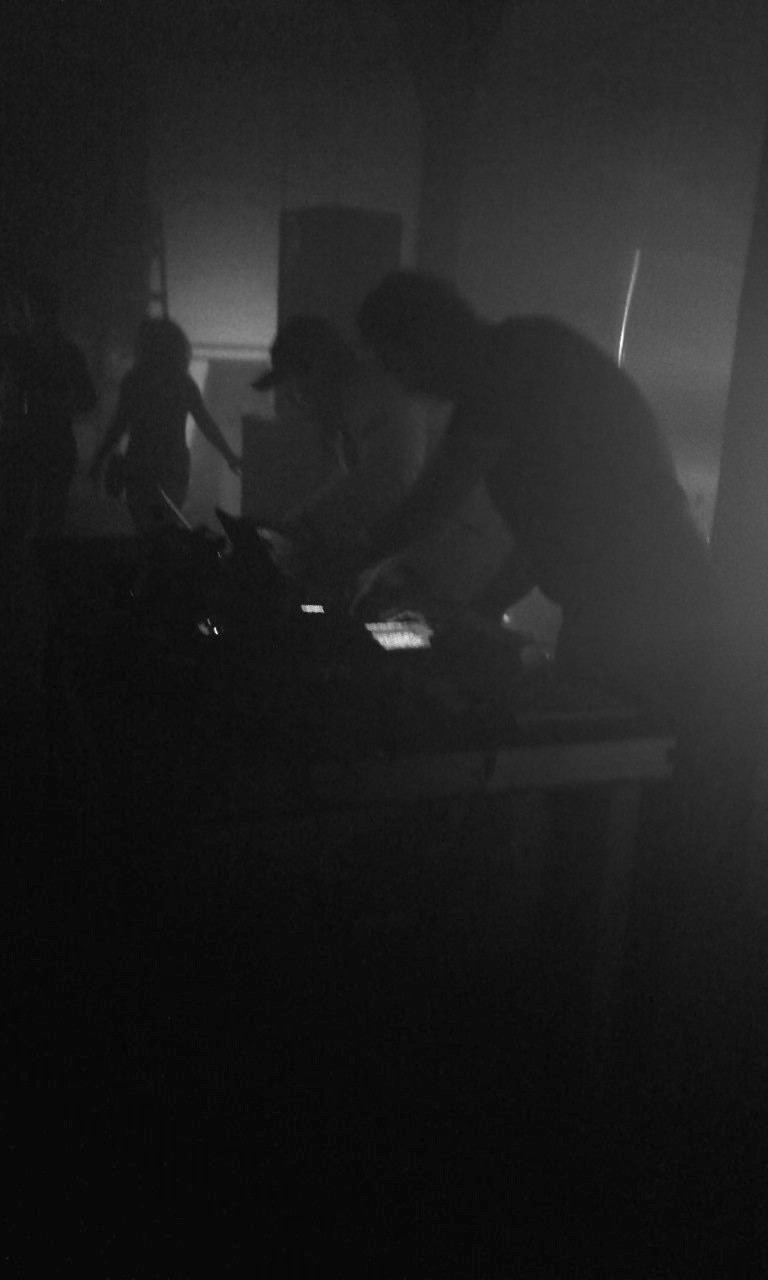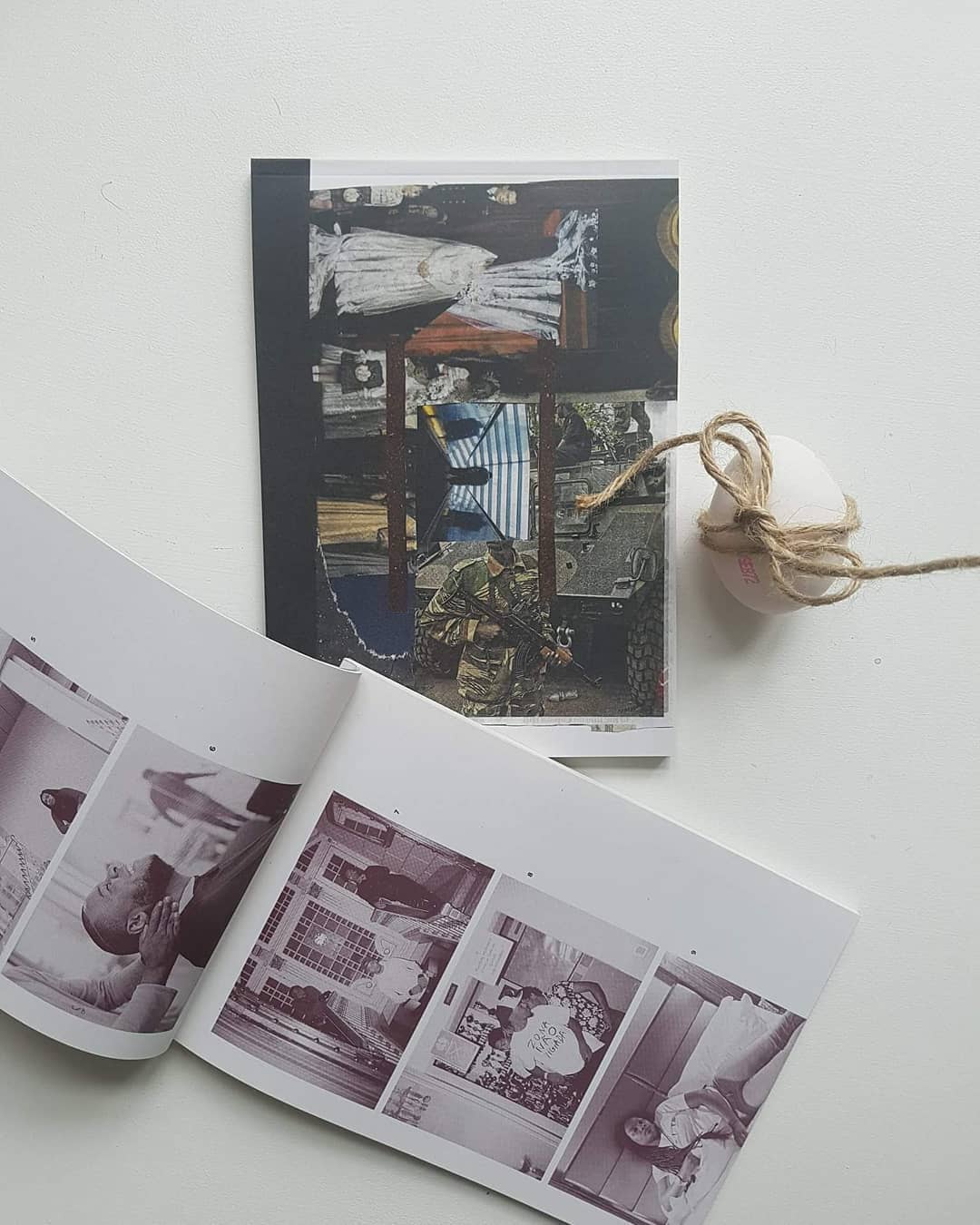Not Your World Music: Noise in South East Asia – Artist talk with Cedrik Fermont

Transcription by Simon Christensen and Javier Orozco.
Not Your World Music: Noise in South East Asia is a book by Cedrik Fermont and Dimitri della Faille about art, politics, identity, gender and global capitalism. From academic electronic music to do-it-yourself noise in Southeast Asia. Contemporary and past noise, electroacoustic, industrial, experimental music and sound art in Cambodia, Indonesia, Laos, Malaysia, Myanmar/Burma, The Philippines, Singapore, Thailand, Vietnam. With political, historical and sociological essays, exclusive interviews with artists and organizers, as well as an extensive bibliography of popular music from Southeast Asia and a thorough discography of noise and experimental music artists.
A compilation, which includes exclusive tracks from artists of these different regions, was released by Fermont’s label Syrphe as a companion to the book. “The compilation is an attempt to cover a varied range of noise and experimental music from Southeast Asia. Limited to just over one hour, the CD format does not allow us to fully cover the richness of the scene,” Syrphe states. “However, we did our best to include a diverse group of artists. We have selected female and male artists, DIY and academically trained musicians, and newcomers and established artists.” Not Your World Music: Noise in South East Asia was awarded the Prix Ars Electronica 2017.
C-drík is a composer who operates in the field of noise, electronic and electroacoustic sound since 1989, born in Zaire (DR Congo), he lives in Berlin (Germany). He explores electronic, experimental and noise music from Asia and Africa, label manager at Syrphe, concert organiser, author, radio host at Radio Staalplaat and Colaboradio, etc. He published his work on various labels such as Syrphe, Ant-Zen, Hymen, Hushush, Ad Noiseam, Nostalgie De La Boue and many more.
Cedrik Fermont (Syrphe) gave this artist talk at Jazzhouse in Copenhagen in November 2017, hosted by Thorbjørn Tønder Hansen artistic director of the festival Gong Tomorrow.
TTH: So, ladies and gentlemen, we are pleased and honoured to have Cedrik Fermont for an artist talk about his practice, and thinking, and writing, and activism, and we also are open for questions at the latter end of this talk. So Cedrik, welcome.
CF: “Thank you. Hello everybody.”
TTH: Cedrik has eclectic roots, he is of Greek, Zairian, and Belgian origin. Born in Zaire, and lived in Belgium and is based now in Berlin. The outset for the talk about this project is that he was awarded the Golden Nica at Ars Electronica in Linz together with Dimitri della Faille for this book and project called Not Your World Music: Noise in South East Asia. Cedrik also runs the project/platform/label/radio show called Syrphe. He is a cultural organizer, he has been labelled a noise nomad and musical archivist and I could add maybe, activist. Cedrik could you tell us what was the outset for this book?
CF: “Both Dimitri and myself travelled a lot in Southeast Asia and East Asia in general in the past, well almost 15 years now. And we realized that the noise and experimental scene, both at an academic level and a non-academic level, was badly documented, if not documented at all for some countries. And we also realized that when we would say, specially me with my label, that we publish music from Asia and Africa, a little bit on my side, many people would ask us ‘oh yeah do you publish traditional music?’ Which deeply gets on my nerves, that there is still this picture, this colonialist picture, that many people are thinking that ‘ok it comes from Asia, from Africa, maybe Latin America, it should be traditional, or hip-hop’. And so then when we called this book Not Your World Music, we wanted to make a statement and also to write down on paper a history of what is going on and what happened in Southeast Asia. Japan has been a lot documented (sic), China has been more and more documented; but places like Myanmar, Vietnam or Malaysia, are almost not documented regarding, in general not only experimental music, but also so to speak, popular music like punk music, like rock and so on. The only exception is Indonesia, I would say, specially for punk, and metal and traditional music, hip hop and reggae and so on. But it is the only exception as far as I know.”
TTH: Why this lack of documentation in Southeast Asia?
CF: “Haha, I cannot totally answer this question. We tried to understand, it is not typical to the region of course, I think that there is still this colonialist view of the world. So if we speak about documentation in general outside of the western standard you could say the same with almost anywhere in Africa, and the Middle East, most people have all those clichés in mind: the Middle East is just crazy people killing each other and maybe doing this oriental traditional music and world music maybe, mixing this with a bit of rock and electronic to make it digestible for western audiences. The same applies for most parts of Asia and Africa and Latin America. I can not really tell why this is still like this, but it is not only about music, it is culture in general, modern art and so on. I got modern art magazines at home with articles and interviews of modern art artists from Africa, from Ethiopia, from the Congo, for example. And friends of mine were digging into them and telling me, ‘whoa we did not know that people were doing modern art in Africa’. And I was really shocked, come on you have internet, how is that possible that you could not imagine it is possible? And people are being fed through the media with wrong images like dictatorships, famine, wars, crazy religious people killing each other and so on. But still in the 21st century, I think people should be able to think twice and think that, ‘ok maybe what I’ve been fed with is not the only picture of this or that region’. Another reason is that I think that many people from the scenes, or academics in Southeast Asia, did not document what they are doing. I remember the first times I went to Asia in general, about 15 years ago, I saw that many artists and performers and organizers, magazines, would focus on Japan, Australia, Europe (Western Europe mostly) and North America and would not think that their neighbors would maybe make something. Or they would not think that what they were doing was worth it to be documented. That it was not as good as the ex-colonizer, or Japan, and so on. And Japan is still seen as a very great and good example in the region. Which is to me, I cannot understand the point, wrong. I mean, I met amazingly good artists in Southeast Asia, as good as whoever in the west or in Japan and so on. But this is the explanation I might give.”
TTH: And you come across many topics which are also highly relevant in other sounds within music, jazz for instance is very agenda focused. It’s about this stance of the colonized view of an area, for example as Southeast Asia, or Africa for that matter. But if we try to take them one by one, this agenda issue for example, and the colonization issue, those are also in a traditional western european contemporary music sense, hot issues so to speak at the moment. At the Darmstadt Internationale Ferienkurse für Neue Musik in 2016 which is this hot spot for very traditional view of contemporary music and what new music is so to speak. In ‘16 there was a lot of debate, especially about agenda, but also about the decolonized view on music. But if we take the agenda issue, you are also at some point talking about that this is an anti-sexist project. This for me means that there is a sexist situation that needs to be dealt with. Is that how you look at it?
CF: “Yes (chuckles).”
TTH: And why?
CF: “Well first. Before the book I published a CD compilation that includes women from East and Southeast Asia. The original project was to publish a compilation including women from the Middle East, Central Asia and Africa, but back then it is was hard for me to find any, except in Israel, Turkey and Lebanon. The situation has changed a lot, and now I could do it. The project emerged out of bitterness at some point, because a feminist, a woman, a composer, that I will not mention, told me ‘you will never find any women active in the field of electroacoustic music and so on in those regions’. I told her ‘Bullshit, that’s not true, I have been there’. And when I asked people in the region some of them would tell me ‘ah yeah I know a bit, or I don’t, or they don’t exist, and so on and so forth, women are not so active’.
So in the end I found a lot of women from Indonesia, from Vietnam, from Singapore, from China and so on and so forth, and I thought it was worth mentioning it in the book because women are active in Southeast Asia, even though the situation is not always easy. However I would say that in Vietnam and Singapore, I noticed that the situation is very different, I suspect that because Vietnam is still a socialist country it makes it a bit easier for women to access education, technology and so on and so forth. And Singapore is pretty westernized at some point, but if we take a country like Indonesia for example, it is obvious that there are a lot less women active in the scene because it is still a very traditional society even though it is modern at the same time, but the role of women is still, right now put in a box and it is hard to escape it, even though the situation has improved, in urban areas mostly, but when you go out in the countryside it is different.
And I wanted to show that many women are also active even though they are maybe rendered invisible by some of the people over there, because many of those women maybe don’t do any music but they organize, they film, they document, they write and it is also important, it is part of the scene. The scene is not only made of people who do music. And in an ideal world we should not make this dichotomy between male and female, but we don’t live in an ideal world. And we wanted to show: yes there are women active also in Southeast Asia, like almost anywhere else. Even though in the west it is not always easy for women, so we wanted to point out this situation. Now it is improving, and for the second edition of the book there will be even more details about this, for example: right now, in early December, there will be a festival in Borneo, in Kalimantan, the indonesian part of Borneo, a noise festival, an experimental music festival organized by women only. Not only for women, but organized by women only. And it is not the first festival, there is a punk and metal festival that has been twice organized by women for women also. So yeah, we wanted to point that out.”
TTH: And in terms of the musical genre that we are trying to talk about here, the noise genre, linking this to the question of world music, or the exotic way of looking at it, that we may establish in our attempt to be interested or grasp what it is. How does this reflect on the scene itself, say for example countries like Vietnam or Indonesia, how do they look upon themselves in the noise music world when you come as an outsider being interested in them? I mean do they build any kind of opposites that you were looking for, or surprised by? How do they define themselves?
CF: “I would say that on an average people were happy that we showed some interest in documenting and publishing things about the local scene. But we got some very bad experiences with a few Singaporean artists. Several of them were pretty angry, basically, some of them would tell that we had a colonialist view, only by the fact that we were using the term Southeast Asia, which is a kind of a western term, we know about it. But we used also ASEAN. But the fact is that people know, geographically speaking, the region under that name. But there were other reasons with Singapore, it is a very particular case. But on average people were happy and surprised (for some) that we would find any interest in the region, which is to me wrong, people should not be surprised because it is culturally a very rich region, even for contemporary music, and specially a few of those countries like Indonesia again, the Philippines also for example. And I would explain them that out of frustration, is not the first time I write something about Asia and some other places. Because I studied electro-acoustic music, well 20 years ago, in Belgium, and what we saw was the One version, one sided history of electroacoustic music, starting with Pierre Schaeffer in France in 1948, which is already wrong to me, because there were other people: in Italy Russolo in the 1910s, Walter Ruttman in Germany in the 1930s, John Cage in the U.S., and the Russians also from the 1920s, 30s, and so on and so forth. We skipped all this, apparently this did not exist, and of course we never spoke, not one word of composers from, again, Latin America, Asia, Africa, or even Oceania, Australia, New Zealand. And I was really frustrating because I knew that there were people out there. So I explained to some of the artists that we interviewed that I wanted to put that on paper, to rewrite a part of this electroacoustic music history. That it is wrong for me to pretend that everything emerged in the west even though I am not blind, many of those artists from Southeast Asia went to study to the U.S., or France, or the Netherlands for example, but nevertheless they built something local, that is worth mentioning, and it is still a very vibrant scene at an academic level and at a DIY level as well. And it should be put on paper, because according to western standards, if you do not write down something on a sheet of paper that doesn’t exist and it annoys me deeply. And now it’s done, it is a proof. And we want to improve it, this book is not a kind of bible, it is an approximation, it contains little mistakes, people we forgot, events we forgot, it is just a first step.”
TTH: And you were saying that you were working on a second edition, let us know a little about what the second edition will contain that it is not in the first one.
CF: “(Laughs) There are things I do not know. The fact is that we are going to write, co-write with local artists and organizers. When we shipped the book to some of the people we interviewed and some of the cultural centers and friends, some of them told us ‘hey why do you focus on this person who did a bit, and not this person, you forgot to mention this and that’. So we want to correct our little mistakes, and improve and dig deeper. So it is going to be a bigger version of this one and we might extend it, it is not sure yet, to Hong Kong, China, maybe Taiwan, we will see. Which are not strictly being part of Southeast Asia like asian countries, but which are definitely connected economically, and culturally speaking. There are big chinese communities living in Singapore especially, but Malaysia, Indonesia, a bit Thailand as well. There are always these connections and exchanges, and it is hard to avoid Japan as well, because the japanese foundation is investing a lot in culture in the region now. So we might extended a bit, not deeply, to those places as well. And well the rest (laughs) I mean I don’t know, we have to talk about this.“

I clearly hate the term world music.
TTH: You deliberately use the the term World Music and then kind of in a negate (sic) form by saying Not Your World Music. The term world music is, I supposed, heavily discussed also in western Europe, is this still the right term to use, to label or is this term Ԭworld music containing in itself a stigmatized and colonialised view on the music from outside Europe or the western countries so to speak? In the UK they have tried to transform the term world music into global music also to stress a movement away from a commercialized view of music from outside the western countries. This discussion between world music versus global music is this something that is also relevant in what you are doing?
CF: “Well, first, I clearly hate the term world music. Because I think it is not, it depends on how you see globally or not. I prefer the term traditional music and then it applies to any kind of music anywhere on earth. But world music is a mix of traditional music together with western music (electronic, rock, jazz or whatever) that makes it easier to swallow for western ears, basically. And I think that it has damaged a lot, specially people like Peter Gabriel or Hector Zazou, at some point not everything he did, to me made very big mistakes, when they did this. They turned it into a commercial product. But for me it is hard to go either for world music or global music, because traditional music from Brittany is not the same as the one from Serbia, which is not the same as the one from Northern Vietnam, which is not the same as the one from Southern Vietnam and so on and so forth.
And again it also depends on how you define traditional music. Do you call gamelan music or kecak music traditional or classical music? According to many westerners it is traditional music, according to me it is classical music. It is not western classical music, but it is classical music with a certain kind of standards, a way of performing it, certain scales and so on and so forth. Hence we called really this book Not Your World Music because we dislike this term. And I do not know how we can name it. We also have in mind that traditional music is something static which clearly is not. If not we would still play only with stones and bones and bamboo I guess, and nothing else. It evolves, maybe more slowly than contemporary music so to speak, but it is something alive and something that should be respected. And I think that when it is turned into this world music, this western way of it, it kind of stagnates, people are waiting for this kind of mirage, this super nice, tribal music but with a nice package. And it should sound like this, people have something in mind, and it really should sound like this and not like something else; it should not be original, adventurous. It is really for me something deeply frustrating.”
TTH: During this talk we have used many musical terms, we have talked about world music, folk music, experimental music, also electroacoustic music and of course the overall headline here, noise music. It seems also that you are working with a quite eclectic concept of noise music and in your book you also have a chapter dedicated to this question: what is noise music? Can these terms that you are talking about traditional music, experimental music, electroacoustic music, somehow find their way into an overall term called noise music. How do these terms relate for you?
CF: “Noise music at some point is also a western term, a western concept. So we try to define what we see as noise music in the book. It is obvious that you have some noises in folk music, and some folk music may sound like noise music for western ears, you do not even need to go so far. In Britanny apart of the bagpipe music, you have some traditional music, I forgot the name of it, which sounds clearly like noise music. And we were asking ourselves, ‘could it be called noise music or not?’. And we do not think so, because there is a concept behind noise music, if we start with Russolo in the 1910s, but even later with composers like Zev in the 1960s-70s, Merzbow in late 70s and 80s, there is a concept that is very dadaistic, anti-music, total annihilation of the melodies and the musical structures, that you may not find in this traditional music that may sound like noise (according to us, but not according to the people who play it). We also wanted to define our views on noise music, because we knew that there are some people who may read the book that are not accustomed to what the concept (concepts even) of noise music is, where it comes from and where it goes to, maybe, and the influences. And also we wanted to point out that there is a history of noise music in the western world that may differ to the one of some parts of Asia, specially in Indonesia for example. Regarding the current definitions of noise music, we can trace back the origin of noise in the late 1960s and the early 1970s, with industrial music and maybe a bit electroacoustic music and music concrète and so on. You can see traces in Pauline Oliveros’ works in the 1950s for example. But in Southeast Asia and specially Indonesia again the origin is kind of different.
When we interviewed, and some other people interviewed local artists, they realized that most of them came from a rock, or punk, or grindcore or metal background. And they were fed up with the commercialization of punk music in Indonesia, it is huge, to me the biggest punk and metal scene is there, so big that the current president is a metalhead basically, that you can hear punk music on the radio and so on and so forth. And so, many punk people switched to something more radical, musically speaking, to noise music and it has been a big influence into their local noise music, that you can also, at some point feel in other parts of Southeast Asia, in Singapore for example. And we wanted to show, noise music as sort of reclaimed by some or many Southeast Asian artists. And when they were not influenced by punk and rock bands, they would be influenced by Japanese bands (they love this concept of Japanoise music that is very very extreme) and not specifically influenced by Western standards. So it was also important to mention in the book that there is a local scene that may differ from the western scene, that does not take what the west did for granted. And I think that this is also very important because, still today when I publish some CDs, specially compilations, some people are surprised that this noise music does not sound exactly like the one in the west or some of them tell me that it sounds like that one in the west and then they do not see the point of collecting music from East Asia and Southeast Asia that sounds more or less like what we do in the west. Which makes no sense to me because noise music is kind of a real world music at some point more than traditional music and folk music.”
A potential to rewrite a history of electroacoustic music and experimental music
TTH: This is of course clearly also a political project, you could say in general terms, containing many layers, there is agenda issues related to the political, there is a geographical one, maybe also an artistic one; but as a kind of political activist project would you say that you have some kind of idealist wishing for this project? I mean, what would you like to happen with this project, kind of long term, in a kind of political sense?
CF: “First I wish that more people in Southeast Asia start to document and write about it. It is their right to not do it of course. But because, as I said earlier, there is still a kind of domination of the west in arts and culture, which is going to change or switch one day or another, it is still important to put that on paper. So it is one of my best wishes, because they live there they may document it much better than us and it would be very important.
And also I would like these projects to be recognized by academics, not only in the west but everywhere. Because if you meet academics in China, for example in Beijing at the conservatory, the Central Conservatory of Beijing, they would document what is going on, especially in China and of course in Japan, and now they have connections with Vietnam, with South Korea, Taiwan of course. But only at an academic level, nothing else, they tend to ignore anything else that happened. And they tend to ignore also the past, what happened in the 1950s until the 1970s in the Philippines or in 1960s in Indonesia.
And I would like them to also not focus only locally onto China but also globally, hence we also gave copies of the book to cultural centers and universities in several countries and we hope that they will keep that as a reference, and not only the western standards again. When I visited some universities like in the UP, the University of the Philippines in Manila, they have a small library which is mostly privately funded by the Maceda foundation, from the José Maceda’s family. José Maceda was one of the first, if not the pioneer of field recordings in the Philippines and some parts of Asia and experimental music in the Philippines in the 1970s. He made an amazing job documenting folk music in Southeast and East Asia. Anyway, so there was this library and I could see plenty of books about Indonesia, some books about Vietnam and Malaysia, and there were only a few about music in the Philippines, even though there is so much to say about music in the Philippines. And not only folk music, about hip-hop and punk music that existed in the 1980s (usually a U.S. connection with the Philippines), about experimental music, academical and so on, there is nothing, nothing was written. And I think that it is important to have that in libraries, that people can access it. By seeing this book and other documents, I hope that they would by themselves try to improve what we did, since as I said it is not a final product.
It is one of my best wishes and also in western universities, I think it is changing, because I have been invited in some universities and festivals to give talks. I wrote a few years ago an essay about electroacoustic music in Africa and Asia between 1944 and the 1980s and I sent a copy to my teacher who taught me in Belgium 20 years ago. And she told me that she did not know about those composers. So to me it is important to go deeper to have this choice and to rewrite a history of electroacoustic music and experimental music that is not focused on the west only. I do not write about Latin America because I do not know so much of it and because I have no time, but Dimitri is writing about Mexico right now because he is been there many times and has been to other places. The same could apply to Cuba where you could find electroacoustic music and festivals, to Chile, to Argentina. I mean it is totally ignored. And also it is important for me to make bridges between those countries, and between those countries and Africa for example. Because it is not only a western centered view if I tell my friends in China that I am publishing electroacoustic music from Angola, they tell me ‘oh wow, there is also this sort of music in Africa’ so I really want to build bridges like everywhere. We live in the 21st century, internet is everywhere, almost, and of course you have modern art and modern music everywhere, but it is still loose it is not well connected until now.”
TTH: In terms of your own practice, I mean you are also an artist and performer yourself, coming out of an electroacoustic tradition at one point, and many others also, but how would you say that this project has affected your own existing practice?
CF: “First it does push me to realize that the way we can compose is still very open. Maybe I have been stuck at some point, not consciously I would say, in my practice of composing music, and by travelling and meeting artists from other places and improvising with them, or seeing how they compose, what is their view (or views) on composing and playing music it has opened my mind and my way of composing. It does push some boundaries for me, and it has pushed me to collaborate more with artists in general, especially there.
I always liked to play music alone, even though I started my first band in 1989, it was a duo, and I played in many bands in the last decades. But mostly I have been composing music alone and I think that when I compose too much alone I get stuck at some point, I repeat myself and then it becomes boring and I start to not like what I do, because of a lack of ideas. So I enjoy to travel in all those places and see other ways of composing and viewing music basically.
Also there are the networks in some of those places, I have always been connected to some networks, because I started in the mid 1980s with the cassette networks and mail art, even though it was slowly the end. When I started it was well, the mid 1980s at some point, but it is still very alive in some parts of Southeast Asia, especially in China, in Indonesia now, in the Philippines. Artists who cannot rely on the state to fund them, to help them, they should rely on themselves most of the time, to organize by themselves, to find ways to build their own instruments, because they cannot access all the technology that we can access here due to money problems and so on and so forth, due to censorship sometimes in some countries.
So people tend to be very open minded and supportive, they tend to organize events in which you can find a noise artist, totally DIY, and electroacoustic or classical music artists, absolutely not DIY, a punk musician, some folk songs and so on, altogether, something that we kind of lost a lot I think here in the west, even though it still exists, it is kind of rare. And over there it is pretty usual, that I performed wherever it was, in Myanmar, or Malaysia, or Indonesia, I performed among other musicians, that as we see it here are completely disconnected with each other but that are supportive to each other, and who like to collaborate. So I ended up playing some jam sessions with people that come for the punk and metal scene, the noise scene and performance scene, and we would mix like this free jazz, punk, noise music. And I really enjoyed it. I do not want to say that that does not exist here but it is less common than over there, where people tend to break the barriers, they simply do not exist at some point, or it is less than here. So it opens my mind I think.”
TTH: Thank you very much. We have a few minutes left for questions. So anyone for a question?
Question from the audience: Did you record a lot, when you were documenting for the book, did you record a lot of the artists that you were documenting so you could make any kind of collection of the music that the books talks about?
CF: “I did not record by myself. There was a CD published with the book but the CD is unfortunately sold out, nevertheless you can access the files online, but I published several compilations and albums before that, in the past ten years. So I never go and record field recordings and publish them, I ask artists if they want to publish something on my label, or some contact me, or I do collaborations, because writing a book is pretty abstract, especially for people who do not know this field of music. To illustrate what we talk about we published this compilation, which also includes some tracks that I would not define with the term noise music but we asked people to provided us a track that was to them noise. We wanted to keep it like this and not impose our view on noise music. So yeah this is how we worked. We included a discography in the end of the book, and bibliographies also. But the bibliographies are more about popular music in the academic sense, whether that is folk music, or punk or noise music. And the discographies include digital releases, cassettes, vinyls, and CDs, with noise and music around electroacoustics from Southeast Asia, so people can see the list and find easily many of those online, not everything though. We wanted to render it very accessible at some point, if people want to dig further. And there is a database in my website also, with (I do not know now) 1,600, 1,700 references that include artists and labels and magazines from Asia and Africa with weblinks and so on and so forth.”
TTH: Anyone else? Okay. So Cedrik Fermont thank you very much for telling us more about your project and artistic practice as well. Thank you very much.
Info: This artist talk is part of the Passive/Aggressive ZINE #7 on music and activism, which you can find at www.passiveaggressive.dk/print. Read more about Cedrik Fermont and Syrphe at www.syrphe.com. You can download the book Not Your World Music: Noise in South East Asia for free online as PDF (223 mb) here https://goo.gl/5SZpfZ or download the individual chapters https://independent.academia.edu/noiseinsoutheastasia.




